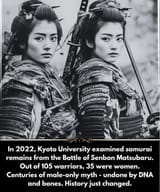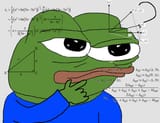>>213300806
>>213299700 (OP)
>>213300810
Let me paint the picture. Suzuki wasn’t doing any DNA analysis. It was 1989, not 2020. DNA testing on archaeological bones wasn’t exactly common practice, especially not in a regional city museum setting with skulls from a Sengoku-period battlefield grave. Suzuki’s team examined 105 human skulls exhumed from what’s called the “head mound” in Numazu City—Sembon-hama, to be exact. The local legend said the heads were from a Sengoku battle. Could be. Might not be. Either way, Suzuki did what physical anthropologists did back then: he examined morphology—skull shape, jaw angle, temporal bone width—to estimate sex. Not confirm. Estimate.
He found that about one-third were likely female. And that’s it. That’s the whole groundbreaking evidence. Not that they were warriors. Not that they fought in battle. Just that they were present in a grave with signs of violent death—cut marks, trauma, broken cranial plates. Was it war? Probably. Were they combatants? Maybe. Or maybe they were camp followers, servants, or just civilians caught in the slaughter. Welcome to Sengoku Japan, where entire castle towns were burned and heads were taken in bulk.
Now fast forward to 2010. Turnbull—who’s a familiar name to anyone with a bookshelf full of Osprey books—writes Samurai Women 1184–1877, a nicely illustrated volume with very little footnoting and some very juicy lines. One of those lines is the following gem: “A third of the DNA-tested remains from the battle of Senbon Matsubara (1580) were women.” Sounds familiar?




